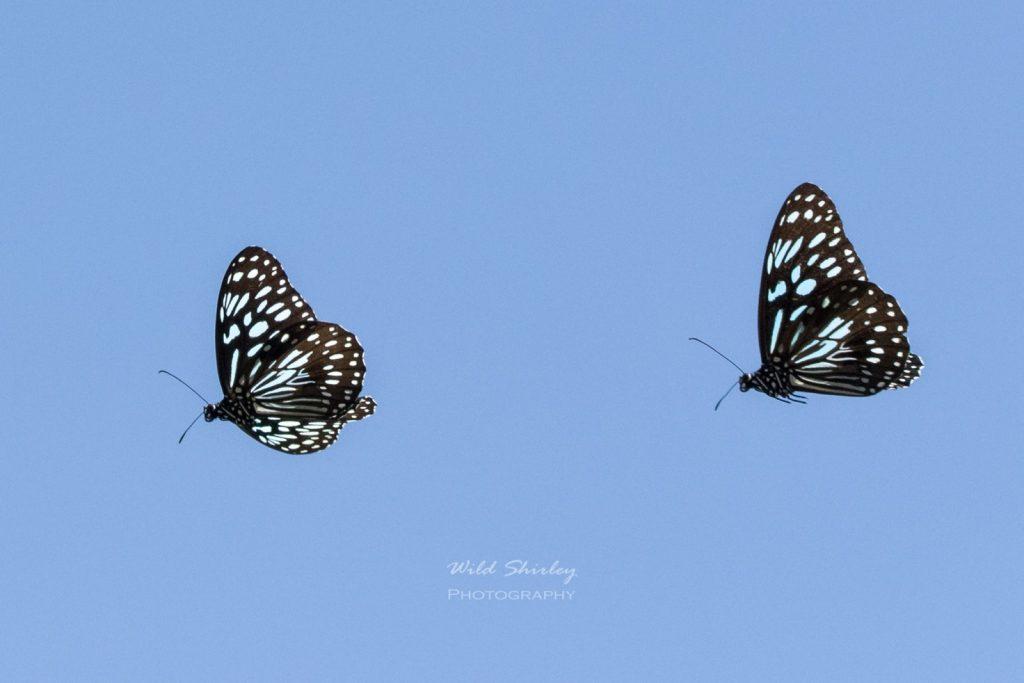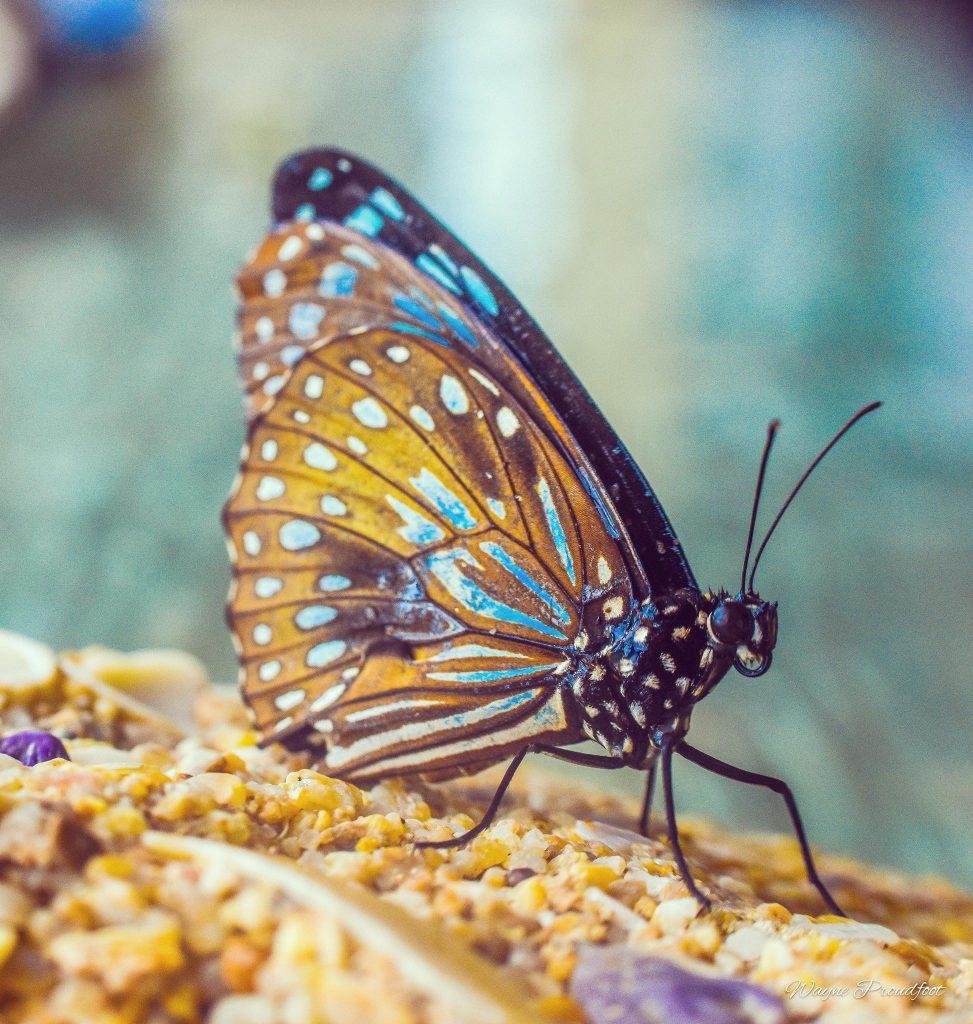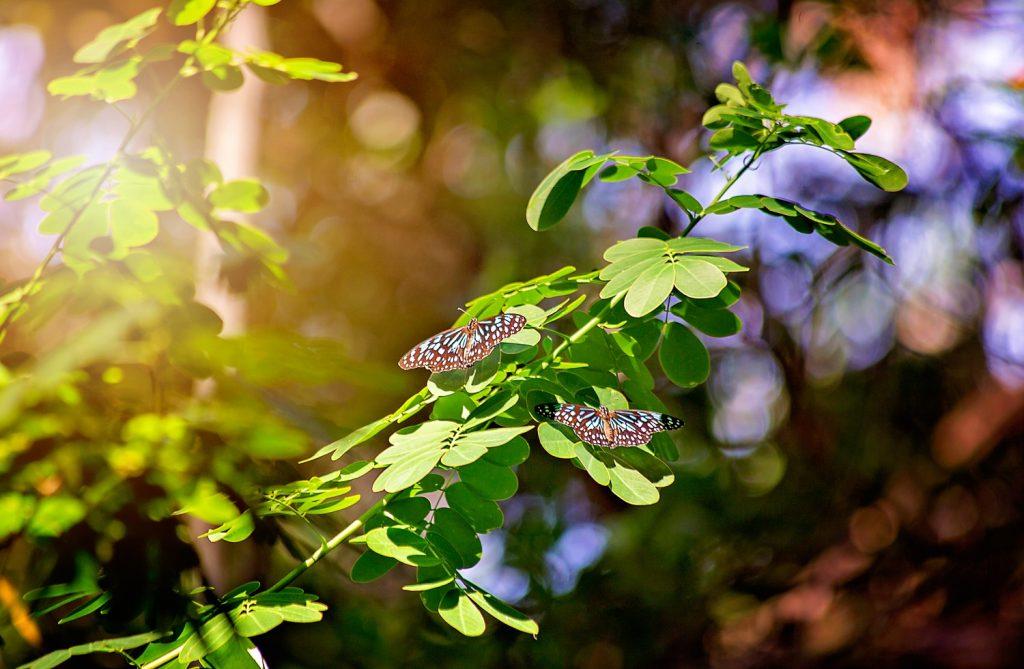Has your tv reception been interrupted lately? Well it might have something to do with the swarming of butterflies taking over the skies right now. Ok probably not, but there’s no way you can miss the hoards of winged beauties littering our skies. The large rain event earlier this year was the trigger for the mass flight of butterflies currently migrating through the north-east coast of Australia.

The most common of those in the sky right now is the Blue Tiger Butterfly. Scientific name – Tirumala Hamata, try saying that with your mouth full. These are one of the longest living of all butterfly species. Living up to six months, compare that to the miniscule live span of as little as 2 weeks for a Monarch butterfly.
Attraction
If you enjoy seeing this amazing event each year, you can attract them to your back yard by planting some host plants (plants that they like to eat and lay eggs on) like Mangrove Waxflower Vine, Corky Milk Vine, Yellow Monsoon Bells. They also love heliotropes (beware these can be toxic to domestic animals). The caterpillars love feasting on toxic plants. The caterpillars are not only immune to the toxins, they store the chemicals making themselves poisonous to their predators. The toxins stored in their juvenile stage will also carry through with them into the transition into adult butterflies.


Dangerous Love
The very same chemicals that make the butterflies toxic to birds is transformed and used as their very own sexy perfume. The male Blue Tiger Butterfly will top up on these toxic chemicals throughout its adult life. But instead of eating the plants they will scratch the leaves until a sap is released which they then imbibe and convert into sex pheromones. These pheromones are irresistible to the females. You all know what happens from here…..
More than a pretty dress
Although incredibly beautiful, each butterfly pattern has a purpose. The black patterns and colours on most are there to help them fly. Butterflies can’t fly if they are cold, the black markings and darker colours help them absorb the heat from the sun. Butterflies wearing brighter colours are warning (or fooling) predators that they are poisonous. You will also find several species have large dots on their wings. These are to appear like large eyes when the butterfly is stationary, in a bid to make them look bigger and scarier than they really are.


Butterflies Taste with their Feet
The mouth of a butterfly (proboscis) is very fragile and using it drains a lot of energy from a butterfly. In order to prevent wastage of precious energy, butterflies have taste receptors on their feet. This helps them find, test and locate food. They will land on different plants drumming the leaves until juices are released. Then a taste check is done using the organs on their feet that sense dissolved sugars and chemicals. It’s not until the right food source is located that they will then unfurl their curly straw tongue to consume.
The butterflies that luckily miss your car windscreen can be found hiding in many beautiful locations around Agnes Water and 1770. The aptly named Butterfly Walk in 1770 is a great place to start (entry at the Captain Cook Monument), the Paper Bark Forest and Eurimbula National Park are also hotspots. The butterflies will be out for a few more weeks yet and then hide in the valleys until the next seasons rain event. If you would like more information on the butterflies you can check out The Blue Tiger Butterfly Effect.
Until then take your eyes to the skies.
